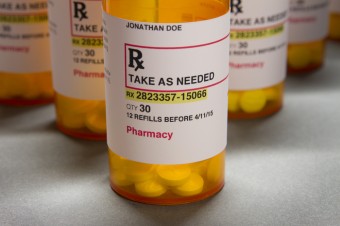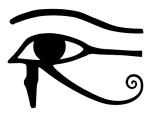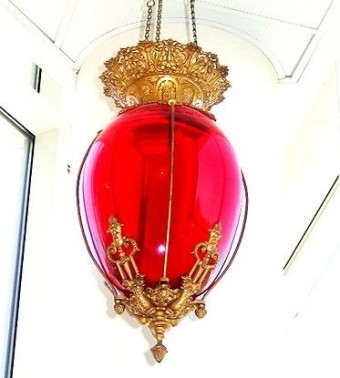What Does Rx Mean and Where Did It Come From?
 The phenomenon of ubiquitous prescription drugs (retail sales in recent years have topped $200 billion in the U.S. alone) is a relatively new experience in human history. However, its common abbreviation, ℞, has deep roots in the relatively distant (and some even claim ancient) past.
The phenomenon of ubiquitous prescription drugs (retail sales in recent years have topped $200 billion in the U.S. alone) is a relatively new experience in human history. However, its common abbreviation, ℞, has deep roots in the relatively distant (and some even claim ancient) past.
Recipe for Wellness
While there are a few commonly put forth explanations as to how we ended up with the ℞ symbol, it’s generally thought that it has medieval roots as an abbreviation for a form of the Late Latin word “recipere” meaning “to take.” The imperative form of this word, “recipe,” meant “take…” as in, “take two and call me in the morning.”
By the 1580s, the word “recipe” had been slightly modified in Middle French to récipé, and had come to mean “medical prescription.” In fact, this meaning of the word prevailed until the mid-1700s, when it was also applied to food preparation.
Regardless, when giving a prescription, physicians typically began their directive with the command “recipe,” which ultimately was abbreviated to ℞. Other common abbreviations used in the medical field that also included an “x” were things like “dx” (diagnosis), “sx” (signs and symptoms), and “hx” (history).
Keeping an Eye on Your Health
 While “recipe” is thought by most historians to be the ultimate source for ℞ , some have proposed a different origin- specifically, the symbol known as the “Eye of Horus.” This was a symbol used in ancient Egypt to ward off evil, protect the king in the afterlife, and, most pertinent to this topic, used for good health. The evidence for this theory is scant, though an eye has been used before as a symbol for pharmacies.
While “recipe” is thought by most historians to be the ultimate source for ℞ , some have proposed a different origin- specifically, the symbol known as the “Eye of Horus.” This was a symbol used in ancient Egypt to ward off evil, protect the king in the afterlife, and, most pertinent to this topic, used for good health. The evidence for this theory is scant, though an eye has been used before as a symbol for pharmacies.
Prayer for Well-Being
![]() Another lesser accepted theory proposed by some scholars is that it derives from the symbol for the god Jupiter. The connection to healing was via prayers that a specific treatment would be effective and the individual would get better.
Another lesser accepted theory proposed by some scholars is that it derives from the symbol for the god Jupiter. The connection to healing was via prayers that a specific treatment would be effective and the individual would get better.
If you liked this article, you might also enjoy our new popular podcast, The BrainFood Show (iTunes, Spotify, Google Play Music, Feed), as well as:
- Can Eating Poppy Seeds Really Cause You to Fail a Drug Test?
- Does Caffeine Really Stunt Your Growth?
- The Truth Behind Truth Serum Drugs
- Can Color Blind People See More Colors When They Take Hallucinogenic Drugs?
- 7 UP Used to Include Psychiatric Medication
Bonus Facts:
 Before ℞ became widely popular as a symbol for pharmacies, the “show globe” was king for notifying the illiterate that a certain establishment was a pharmacy. These were hung outside of the doors of the businesses, not unlike how the barber pole announced a place you could get a shave or be bled (see: The Bloody History of the Barber Pole). While there is much debate over the origin of the show globe, the leading theory comes from pharmacist and curator of the Smithsonian, George Griffenhagen. It would seem that the show globe was a product of competition between apothecaries and chemists; the former classically used herbs and other such things to cure what ails you, and the latter used various chemical mixtures they’d prepare. To signify they dealt in chemicals, they’d display a container filled with bright colored chemicals. Who exactly was the first to do this isn’t known, but around the 17th century the practice started to catch on and it popularly continued in many parts of the English speaking world until the early 20th century.
Before ℞ became widely popular as a symbol for pharmacies, the “show globe” was king for notifying the illiterate that a certain establishment was a pharmacy. These were hung outside of the doors of the businesses, not unlike how the barber pole announced a place you could get a shave or be bled (see: The Bloody History of the Barber Pole). While there is much debate over the origin of the show globe, the leading theory comes from pharmacist and curator of the Smithsonian, George Griffenhagen. It would seem that the show globe was a product of competition between apothecaries and chemists; the former classically used herbs and other such things to cure what ails you, and the latter used various chemical mixtures they’d prepare. To signify they dealt in chemicals, they’d display a container filled with bright colored chemicals. Who exactly was the first to do this isn’t known, but around the 17th century the practice started to catch on and it popularly continued in many parts of the English speaking world until the early 20th century.- According to the Kaiser Family Foundation, in 2011, the annual per capita rate of prescription drugs being filled at pharmacies in the U.S. was 12.1, with neighboring states Kentucky and West Virginia leading the pack at 19.3 per person. Alaska had the lowest with 7.5. It should come as no surprise that the most prescriptions are filled for the 65 and older set, with annual per capita prescriptions among that group at 28.0.
- Females in the U.S. fill nearly 50% more prescriptions, per capita, than males (14.3 for female compared with 9.7 for males). However, in a recent study, women were found to be: “Less likely than men to use those medications as prescribed . . . . The authors suggest that women may stop using medications if they experience negative side effects or don’t see the kind of results they expect.”
- According to the CDC, “100 people die from [prescription] drug overdoses every day in the United States.” In addition, they have found that: “The misuse and abuse of prescription painkillers was responsible for more than 475,000 emergency department visits in 2009 . . . [and] more than 12 million people reported using prescription painkillers nonmedically in 2010.”
- In 2010, 16,651 people died from prescription painkiller overdoses in the U.S., an amount slightly higher than those who fatally overdosed on non-prescription drugs (16,195). Interestingly, no (0) deaths were attributable to marijuana use.
| Share the Knowledge! |
|





Medication (pharmacy) majic, sorcery, witchcraft, a drug, spellgiving potion, a druggist, poisoner, a magician. In the Greek to English sorcerers means these things. Revelation 9:21 and they did not repent of their murders or their sorcerers or their sexual immorality or their thefts. Revelation 18:23 for by your sorcery all the nations were deceived.
Today I found out, that Rx in shorthand of Recipe. All this time, I thought that it is derived from Zeus’ symbol.